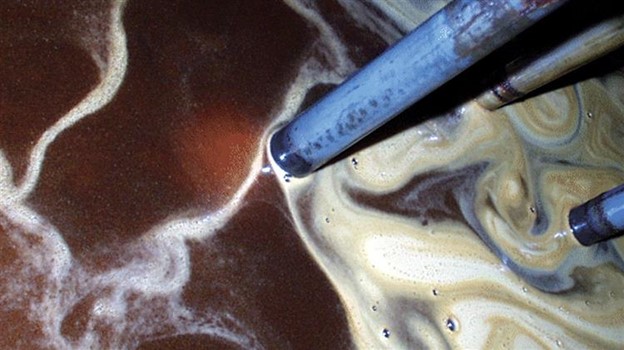
Air as a Contaminant
When contamination comes to mind, we often think of particulate and water contamination. The truth is there are many other contaminants we should consider and attempt to control. To start, we should define contamination, which is any material not contained in the lubricant's formulation. Contaminants can potentially damage the oil and the lubricated components. Although air is always present in lubricating oil, it is often justifiable to adopt measures to minimize its presence.
Types of Air Contamination
Air can exist in oil in three different states: dissolved, entrained and foam. Air dissolved in oil exists as individual molecules which are similar to CO2 dissolved in soda water. This type of air is invisible and impractical to detect. Dissolved air typically has no negative effect on the performance of the lubricant.
Entrained air in oil is comprised of tiny air bubbles suspended in the oil. This type of air contamination produces a cloudy appearance and is arguably the most detrimental. Although there are several common causes for cloudy oil, this can be identified by taking a sample of the oil and observing whether it clears up over time. If the cloudiness was caused by water or another liquid contaminant, an aqueous layer should form as the sample clears.
Foam is the other common type of air in oil. Foam typically refers to a stable layer of relatively large bubbles that accumulate at the surface of a reservoir. In some systems, foam at the surface may not be a cause for concern, but the presence of a foam layer may indicate excessive air entrainment.
Causes of Air Contamination
There are several conditions that lead to excessive air contamination. The most common of these is water contamination. When oil meets water, its surface tension is lowered, allowing bubbles in the oil to separate into smaller particles that are more easily suspended. Many other contaminants have a similar effect, such as solvents, chemical contaminants, and even oil oxidation by-products. The latter is the primary reason oil foams more as it ages.
Other causes include loss of antifoam additives, suction leaks, poor reservoir design, using the wrong viscosity, or using too much antifoam additive. Under certain circumstances, antifoam additives can be abnormally depleted. This often prompts users to add defoamant to a system, which creates the opportunity to add too much. Use caution and follow the proper guidelines when attempting to re-additize the oil.
Effects of Air Contamination
Air contamination can have negative effects on the machine and the lubricant. Air can damage a lubricating oil by increasing the rate of oxidation and thermal degradation, depleting additives, reducing its heat transfer coefficient and reducing its film strength. Oil can oxidize when its molecules come into contact with oxygen. It stands to reason that the more oxygen that exists in the oil, the faster the oil will oxidize. This problem is exacerbated when the bubbles move into high-pressure environments where the change in volume causes a drastic increase in temperature. The process, sometimes called microdieseling, causes thermal degradation of the oil as well.
Machine wear can be generated by air contamination by several mechanisms. For one thing, air is compressible. In order for the oil to create the appropriate lubricating film thickness, it must be incompressible. When the oil is heavily contaminated with entrained air, its film strength can be reduced to the point where the film breaks down, allowing metal-to-metal contact between interacting surfaces. Depending upon the type of machine, this effect could be rapid.
In machine environments where dramatic pressure changes occur, such as a hydraulic pump, the dramatic and instantaneous volumetric change causes bubbles to implode violently, which leads to the erosion of machine surfaces. In hydraulics, entrained air can create other problems as well, such as spongy operations, loss of control, and an increased likelihood of surface deposits in valves.
Identifying and Controlling Air Contamination
When a foaming problem suddenly develops in a sump, there are several things to look for. First, take an oil sample from the drain to check for the presence of free water. If water is in fact the culprit, the foam actually does us a favor by alerting us to the water problem. If gross water contamination is not observed, take an oil sample for analysis to inspect for a chemical contamination, if the wrong oil was added, or if the oil is degraded. Another common cause of a sudden problem is a suction leak in a circulating system. This type of problem can often be detected by coating the fittings with foamy shaving cream and watching for dimples. Very often there will be a number of leaks, so it is important to perform this test over all points where air may enter the system.
If a system has a history of foaming problems, it may be an ongoing problem of contamination or a system design issue. Some common reservoir problems that lead to foam are using a sump that is too small, having oil return lines that terminate above the oil level causing mixing, or having suction and return lines in close proximity. These problems can sometimes be addressed by using diffusers, installing baffles, or using plates or screens for gravity-return systems.
As mentioned before, it may be impossible to completely eliminate air from lubricated systems, but steps should be taken to reduce it as much as can reasonably be expected. Eliminating excessive air will likely give more life to your oil, improve system performance, and reduce wear and deposits.







